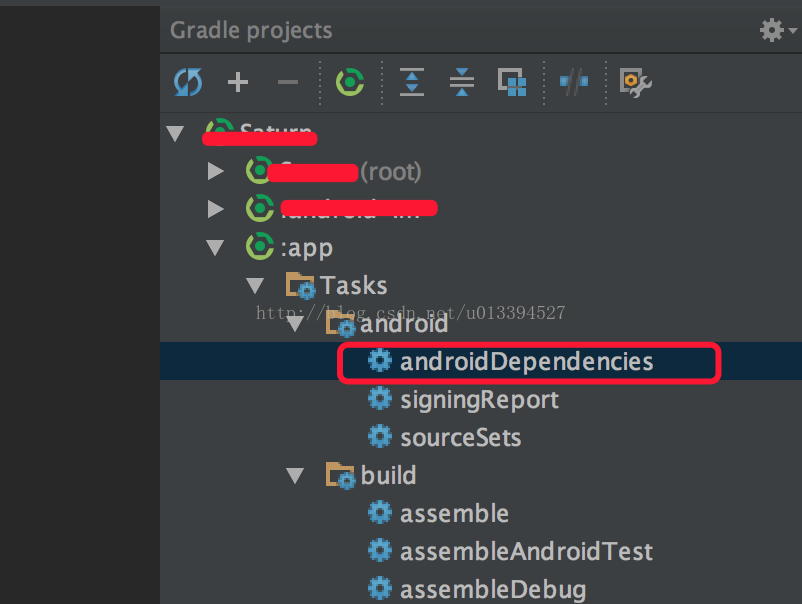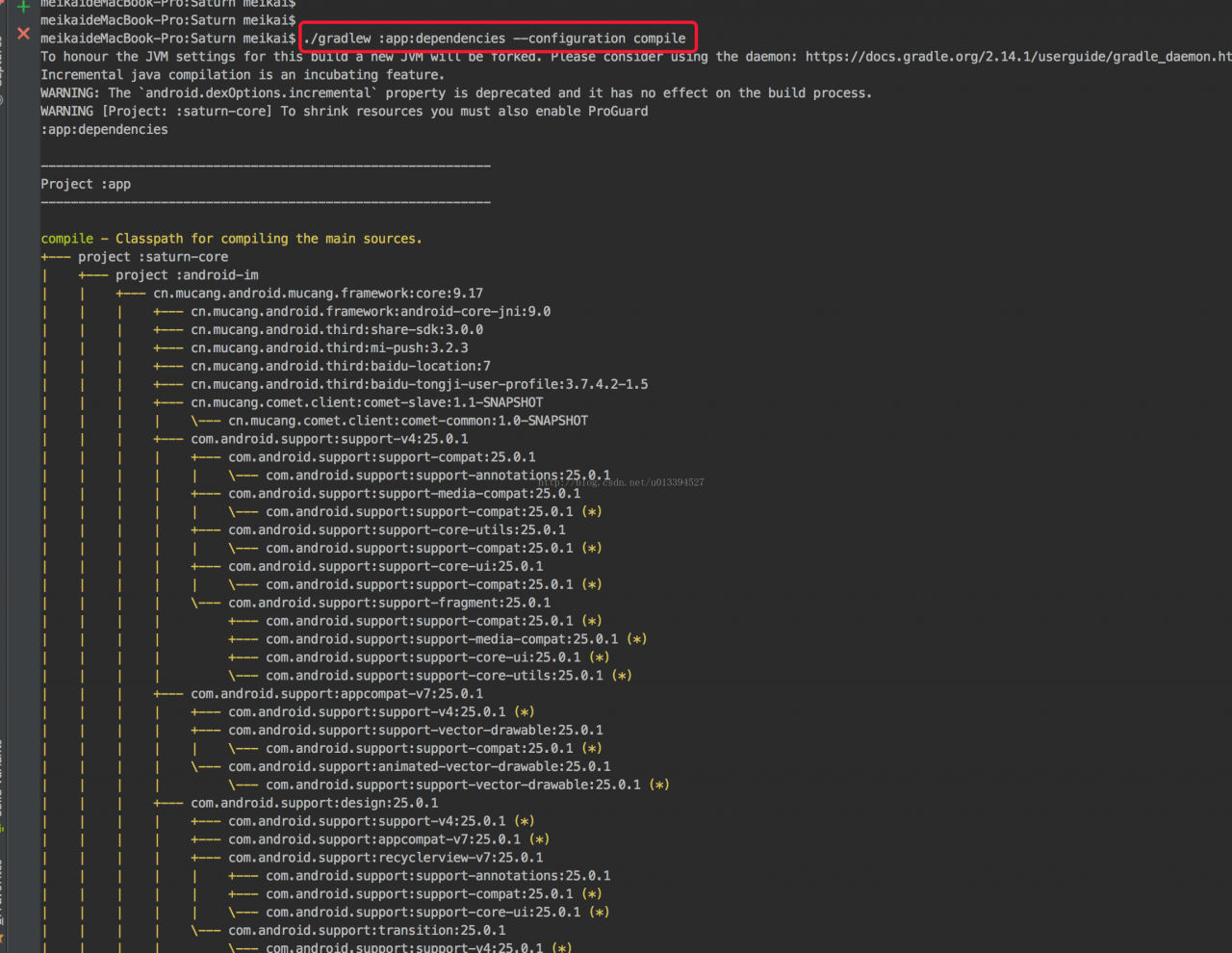the command
has been used to view the android dependency tree until now
./gradlew: app: dependencies

or operate
directly in the gradle shortcut command on the right

although this command does the job, it prints out all the dependency trees under every step gradle executes, including debugApk, debugCompile, releaseApk, releaseCompile, compile, etc. It takes a long time, but the final result set is also a large one, not to be looked at.
, but we actually only need the dependency tree from the compile time, so we can configure a parameter after the command.
command:
./gradlew :app:dependencies –configuration compile
where the compile configuration compile says you only need to print out the dependencies in the compile environment

it is important to note that when the same stock is in multiple versions, gradle will automatically use the highest version of the library applied everywhere. The library with “(*)” in the figure above indicates that the library has been overwritten.
Read More:
- Unable to resolve dependency tree
- [Solved] Android gradle Error: gradle project sync failed. Please fix your project and try again
- Error in Cordova project execution command after Android studio upgrade: could not find gradle wrapper within Android SDK
- Android Studio sync build.gradle appears: Failed to resolve: com.android.support:appcompat problem
- Record once the solution of gradle dependency problem: failed to determine a suitable driver class
- Could not install Gradle distribution from ‘https://services.gradle.org/distributions/gradle-6.7.1-b
- Android dependency merge rules
- Gradle tasks disappeared after upgrading Android stuido 4.2?
- [Solved] Android Gradle configure error: Location: Class buildconfig
- How to Fix Android Error:This Gradle plugin requires Studio 3.0 minimum
- Android studio “sync project with gradle files” button disappears
- Android dependency conflict resolution
- [actual record of Android stepping on the pit] Android studio reports an error invalid gradle JDK configuration found after importing the project
- android studio Error Gradle project sync failed. Please fix your project and try again
- Import Android project Error:Internal error : org.gradle.tooling .BuildException: Could not execute build…
- Viewing MD5 value of file under Windows
- Error: Error parsing D:\new_android\Android SDK\system-images\android-25\android-wear\armeabi-v7a\de
- Centos7 viewing and closing firewalls
- Viewing crontab log of timed tasks in Linux
- Viewing the file system format of disk partition under Linux